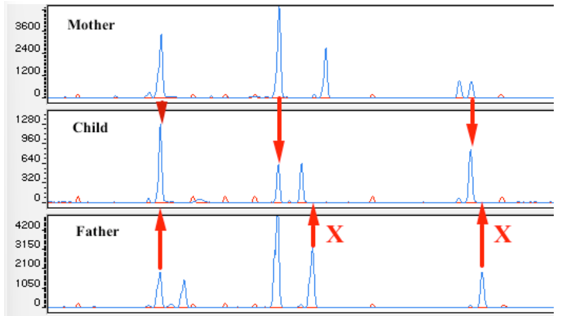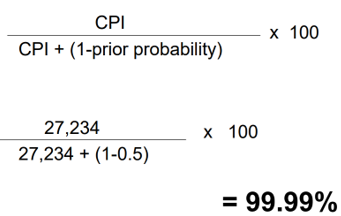Paternity Testing
1/8
There's no tags or description
Looks like no tags are added yet.
Name | Mastery | Learn | Test | Matching | Spaced |
|---|
No study sessions yet.
9 Terms
Short tandem repeats (STR)
Microsatellites
Repeat units of 1-7 bases
5-100 repeats on each satellite
Kinship testing
Paternity (civil and criminal)
Human ID in mass disasters, mass graves and compromised remains
CODIS loci is used for paternity testing (13 STRs are commonly used)
Two outcomes – the person involved could be biological father OR they could be excluded as the biological father
If they are excluded, no statistical test is performed
Exclusion
The mother is heterozygotic
The child is homozygotic
The father is heterozygotic
The allele that is the same between the mother and child must come from the mother
Match the other alleles to see if they are similar with the father – they are not, so this is an exclusion
Mutation – man has mutation at 3’ end of primer for a particular STR so allele does not amplify and would be missing therefore, no STR and an exclusion
Need three exclusions to use as evidence to exclude a man being the biological father

Inclusion
If there are matching STRs between the profiles, this would be an inclusion
Must do a statistical test and prove within 99.99% accuracy

Assessment of tests
The maternity of a child is not in question
In a paternity test, the tested man can either be excluded as the biological father or not excluded
At this point of inclusion, a statistical calculation must be performed to assess evidence strength
Paternity index
Probability of the match if the man is the biological father vs. probability of the match if another unrelated man is the biological father
For each STR, need to calculate the likelihood ratio: X/Y
X = chance that the Alleged Father (AF) could transmit the obligate allele
X = 1 if father is homozygous
X = 0.5 if father is heterozygous
Y = chance that some other man of the same race could have transmitted the allele
Maternal index value
Mother is heterozygotic, so maternal allele probability = 0.5
Combined Paternity Index (CPI)
Multiply the values of all STRs to get the combined paternity index
Take the big number and put it into the Probability of Paternity (POP)
Probability of Paternity (POP)
The prior probability is only 0.5
There are only two possibilities - they are the father or they are not
